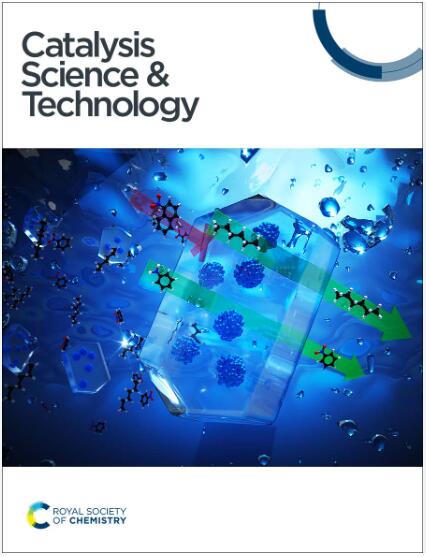Deactivation mechanisms and mitigation strategies for nickel-based acetylene semi-hydrogenation catalysts†
IF 4.4
3区 化学
Q2 CHEMISTRY, PHYSICAL
引用次数: 0
Abstract
Acetylene semi-hydrogenation is a crucial reaction in the ethylene purification industry, and nickel-based catalysts are widely studied due to their low cost and excellent hydrogenation activity. However, the catalytic stability of these catalysts remains a significant challenge, with unclear deactivation mechanisms and a lack of effective strategies. In this paper, we used techniques such as hydrogen-programmed temperature reduction coupled with on-line mass spectrometry (H2-TPR-MS), in situ Fourier transform infrared spectroscopy (in situ FT-IR) under reaction conditions, and Diffuse Reflectance Infrared Fourier Transform Spectroscopy with CO as a probe molecule (CO-DRIFTS) to uncover a non-classical deactivation mechanism for supported nickel-based catalysts. Specifically, we discovered that the active Ni component interacts with hydroxyl groups on the support surface under reaction conditions, leading to the formation of inactive NiOx species. This interaction alters the electronic structure of the active Ni sites, affecting the adsorption and activation of acetylene, and ultimately results in gradual catalyst deactivation. Based on these findings, we proposed a strategy to modify the support surface and weaken this interaction, which enabled the design of highly stable nickel-based catalysts.
镍基乙炔半加氢催化剂失活机理及缓减策略
乙炔半加氢反应是乙烯净化工业中的关键反应,镍基催化剂因其成本低、加氢活性优异而受到广泛研究。然而,这些催化剂的催化稳定性仍然是一个重大挑战,失活机制不清楚,缺乏有效的策略。在本文中,我们使用了诸如氢程序温度还原耦合在线质谱(H2-TPR-MS),反应条件下的原位傅里叶变换红外光谱(In situ FT-IR)以及以CO为探针分子的漫反射红外傅里叶变换光谱(CO- drifts)等技术来揭示负载型镍基催化剂的非经典失活机制。具体来说,我们发现活性Ni组分在反应条件下与载体表面的羟基相互作用,导致非活性NiOx物质的形成。这种相互作用改变了活性Ni位点的电子结构,影响了乙炔的吸附和活化,最终导致催化剂逐渐失活。基于这些发现,我们提出了一种改变支撑表面并削弱这种相互作用的策略,从而能够设计出高度稳定的镍基催化剂。
本文章由计算机程序翻译,如有差异,请以英文原文为准。
求助全文
约1分钟内获得全文
求助全文
来源期刊

Catalysis Science & Technology
CHEMISTRY, PHYSICAL-
CiteScore
8.70
自引率
6.00%
发文量
587
审稿时长
1.5 months
期刊介绍:
A multidisciplinary journal focusing on cutting edge research across all fundamental science and technological aspects of catalysis.
Editor-in-chief: Bert Weckhuysen
Impact factor: 5.0
Time to first decision (peer reviewed only): 31 days
 求助内容:
求助内容: 应助结果提醒方式:
应助结果提醒方式:


